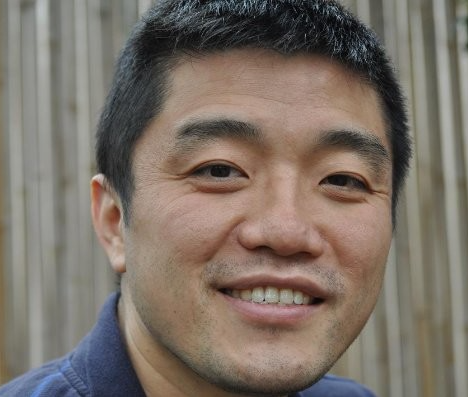In striving to continue the quest for innovation, Toyota Motor North America (Toyota) has filed more patents than any other car manufacturer every year since 2014. As formally recognized by the United States Patent and Trademark Office, Toyota’s patents cover inventions in areas like battery research, automated driving systems, hardware, software, Artificial Intelligence, materials and more. Within this portfolio of patents, Norman Lu, senior manager of Technical Strategy for EV Charging Solutions, Max Parness, senior manager of Grid Services for EV Charging Solutions, working closely with Fred Mau, IP counsel and senior manager of IP Solutions, have expanded Toyota’s intellectual property footprint in the area of electrification. Ahead of the reveal of the 2023 Toyota bZ4X, Toyota’s newest electrified vehicle (EV), the company’s EV Charging Solutions team filed dozens more patents around EV charging, renewable energy, and energy management.

Norman Lu
These patents support the integration of plug-in hybrid electric vehicles (PHEVs) and battery-electric vehicles (BEVs) into the electric grid, complementing the growing share of electricity generated by renewables. By helping the grid integrate more renewable resources, Parness and Lu are working to support broader social decarbonization and Toyota’s Environmental Challenge goal of achieving a net-positive environmental impact.

Max Parness
“As our company transitions to becoming an electrified mobility company, ensuring that our technology is cutting-edge and innovative is key to remaining competitive. Being competitive nowadays requires thinking about impacts beyond just the vehicle, including how vehicles and the grid can help one another decarbonize,” Parness explains. “Continuous improvement is a fundamental tenet of the Toyota way.”
Clean Assist and Sustaining Clean Energy
As part of their goal of social decarbonization, Lu and Parness collaborated to develop Clean Assist, a project that matches electricity used to charge eligible Toyota PHEVs and BEVs with 100% renewable energy. This program was launched in California in 2021 as part of a cross-functional collaboration with Toyota’s Connected Technologies, Enterprise Strategy, and Sustainability and Regulatory Affairs teams. It was Toyota’s first commercial initiative to pair the necessities of EV charging with the sustainability benefits of renewable energy.
This collaboration stimulated the pair to think of other innovative ways that Toyota could leverage electric vehicles to positively impact the energy sector and the environment.
“We are focused on ensuring that the transition from traditional vehicles to electrified vehicles is seamless and user-friendly,” Lu says. “Securing patents for our technology allows our team to directly contribute to Toyota’s commitment to electrification and carbon neutrality.”
Charging Solutions and Empowering Clean Energy

Toyota publicly filed patent
In the name of “continuous improvement,” Toyota created the EV Charging Solutions team in 2021 to create a unique EV charging ecosystem for Toyota customers. In addition to focusing on both hardware and software solutions to enhance the EV charging experience, the team is now leading the development of collaborations and partnerships that enhance the customer experience by leveraging technology to support the beneficial integration of Toyota’s PHEVs and BEVs into the electric grid.
As part of their own environmental goals, many grid operators must integrate an increasing amount of renewable electricity. Toyota can help support these goals through the development of vehicle capabilities that empowers customers to determine when best to charge and, in the future, discharge back to the grid. In doing so, vehicles can contribute both to the environment as well as to reducing strain on the grid during peak times.
By continuing to develop patents, Lu hopes to use electrified vehicles to provide not only mobility, but also energy services to society. While fuel cell electric vehicles, PHEVs and BEVs combined to account for only about 5% of annual sales today, that is expected to change quickly as Toyota continues its goal toward electrification.

Toyota publicly filed patent
“The amount of energy and power available from the electrified vehicle fleet could potentially equal hundreds of traditional electric generators,” Lu says. “Mobility and energy will be woven together as we electrify vehicles, and Toyota will be able to contribute significantly to the entire energy ecosystem through how our vehicles charge or discharge back to the grid and other energy sources.”
“We are viewing the integration of vehicles and the grid as a way to benefit not only drivers, but society more generally.” Parness says, “Our patents ensure that we will be able to make a unique contribution as part of our journey towards becoming an electrified mobility company.”
